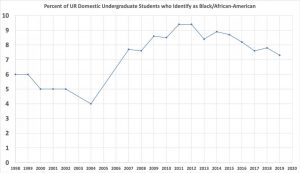The various articles in Impossible were highly impactful to me. For starters, I resonated a lot with Danusha Goska’s “Political Paralysis” piece because I find myself looking in the mirror and asking, “How could someone like me make a difference?” Indeed, I agree with Goska that our society has commodified the value and meaning of virtue by tying it to materialistic and elitist things that the majority of the population may always vie for. Yet, most might never attain the diverse systems that work against certain groups in our global society. Also, I like how Goska changed the question from “How could someone like me make a difference?” to “What can I do today to make the world a bit of a better place than it was yesterday?” The simple things in life can go a long way for people. For instance, remembering someone’s name and waving/speaking to them when you see them around campus helps diminish Richmond’s pervasive social disconnection problem.
On another note, Howard Zinn’s “The Optimism of Uncertainty” made a really great point about the fragility that people in positions of power have. I actually connected this idea to the TV drama Reign. In one episode, Queen Catherine scolds Queen Mary for not yielding to the nobles’ demands at court. She tells Mary that as royals, their true power comes from the nobles’ and other groups of people such as the servant class – obedience to their authority. Without it, they could very well be murdered, so it is in both of their best interests to keep the nobles and the people happy at all costs. Moreover, I think that if society could rally behind this idea more, we could prompt an “unexpected” good change in history that could make the world a much better place than it is today.

